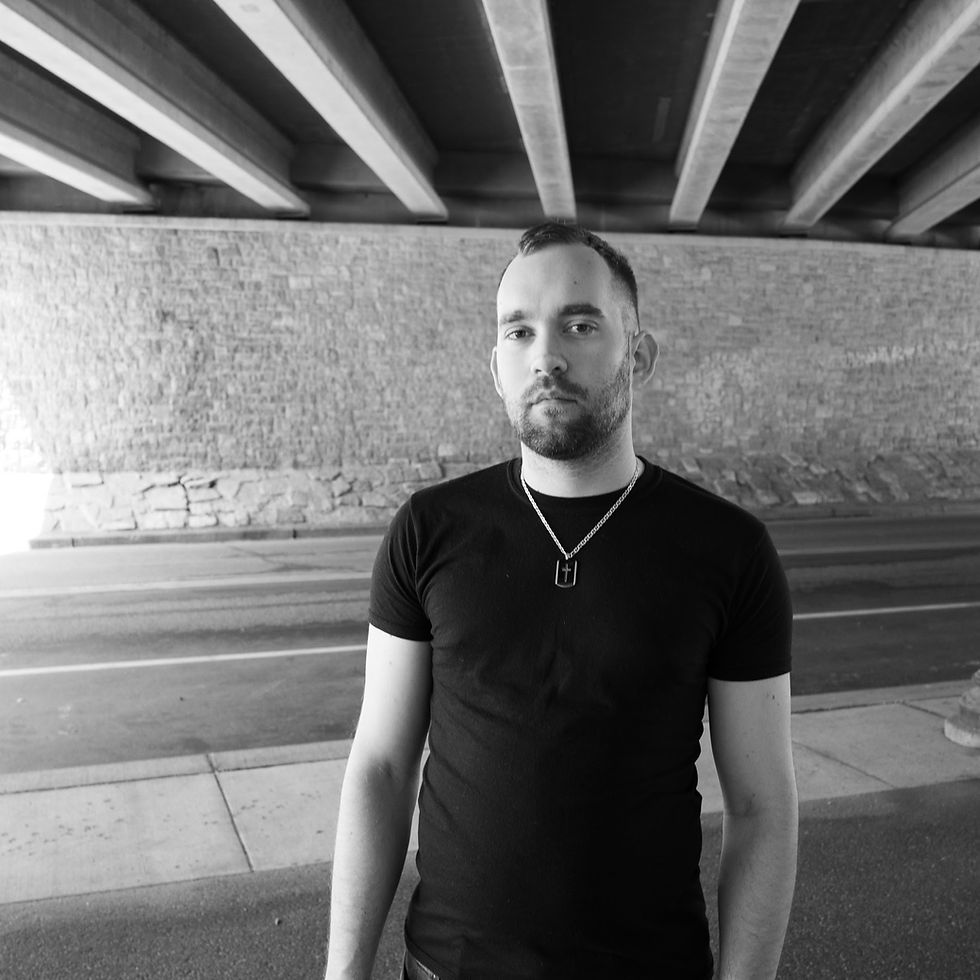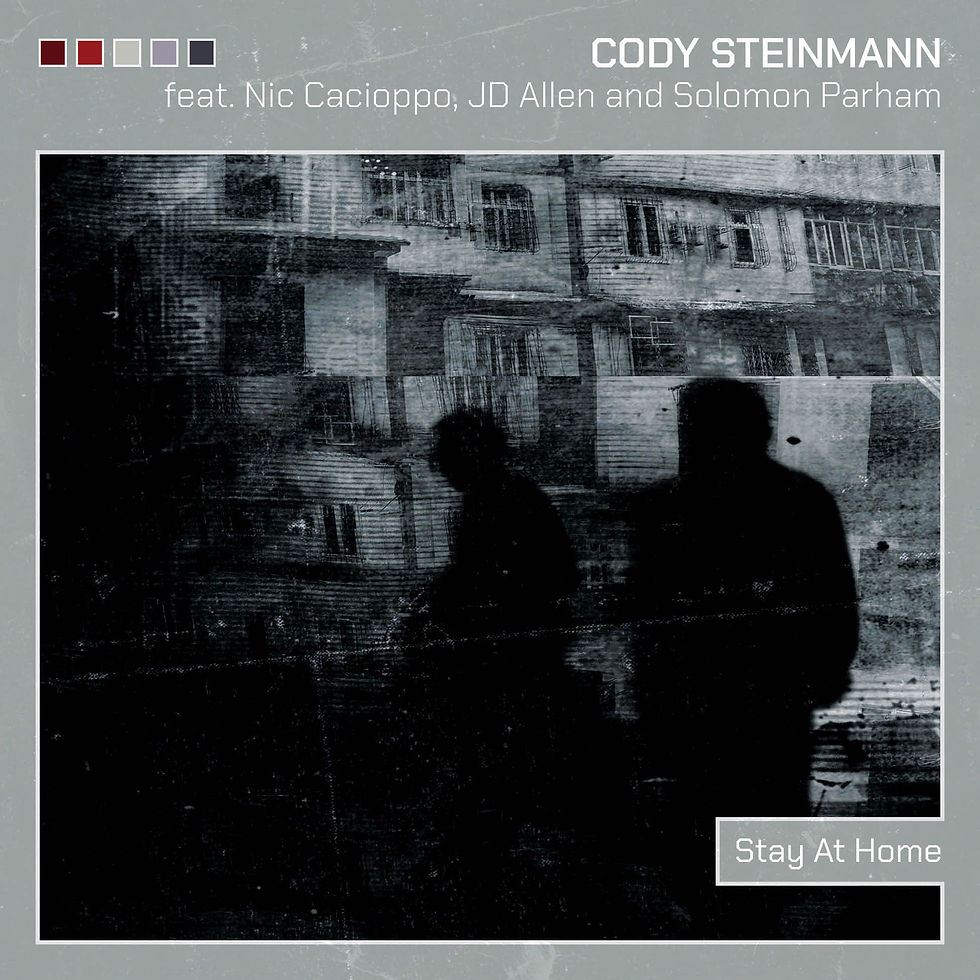Cody Steinmann’s Stay At Home: A Masterpiece Born from Isolation
 Rachel Abela
Rachel Abela- Jan 22
- 5 min read

When it comes to genre-defying artistry, Cody Steinmann has proven himself a virtuoso.
Blending jazz, fusion, hip-hop, and rock, Steinmann’s music transcends boundaries, delivering a sound that’s both experimental and deeply human. His latest track from the upcoming album Stay At Home is no exception—a raw, emotional odyssey that captures the beauty and horror of staying at home in isolation.
The Art of Isolation
Stay At Home draws from Steinmann’s own battles with loneliness and complex emotions, including those brought on by CPTSD. The song paints an evocative picture of the struggle between suffocating solitude and the creative liberation it can inspire. Through haunting melodies, intricate improvisation, and deeply felt rhythms, Steinmann transforms feelings of isolation into a powerful, cathartic experience.
“I wanted to explore what it means to be alone—not just physically, but emotionally,” Steinmann shares. “This song is about finding beauty and freedom in creation, even when the world feels disconnected.”
True to Steinmann’s style, the track pushes musical boundaries with its fusion of influences. Jazz improvisation lays the foundation, while rock's raw intensity and hip-hop’s rhythmic edge add layers of texture. The result is a dynamic, unpredictable journey that mirrors the complexities of human emotion. One moment, the music feels meditative and introspective; the next, it’s a roaring wave of frustration and release.
A standout feature of the track is its interplay between light and dark tones—an auditory representation of the struggle between loneliness and self-expression. Steinmann’s guitar work shines, weaving delicate phrases with thunderous riffs that reflect the tension and resolution within the song’s narrative.
A Call for Connection
Beyond its intricate composition, Stay At Home carries an important message. Steinmann hopes listeners will reflect on the importance of connection—whether it’s reaching out to loved ones, engaging with strangers, or simply finding solace in creative expression.
“I want people to know they’re not alone,” Steinmann says. “Even in isolation, we can create something meaningful and find ways to connect, not just with others, but with ourselves.”
Cody Steinmann’s Stay At Home is more than a song—it’s a lifeline for those grappling with loneliness, a reminder of the healing power of art, and an invitation to connect in meaningful ways. With its emotional depth, genre-bending sound, and profound message, this track promises to resonate deeply with anyone who’s ever felt the weight of isolation.

"Your latest track, Stay At Home, explores the complexities of isolation. Can you talk about how your personal experiences with loneliness and CPTSD influenced the creation of this song?"
I've suffered with PTSD since childhood, not sure when in my life I graduated to CPTSD but If I had to guess it was probably late elementary or middle school. I never had a very large group of friends and to this day I keep a fairly small circle, for different reasons though.
I feel like I've always struggled to connect and when I have been able to connect it's been very difficult for me to feel those connections due to my struggles. These feelings I deal with in this regard have influenced all of my music. However, this series of singles and this track in particular are the first time I've adressed these issues on a relationship and career level.
Stay At Home is a journey through two things. One, it's about the pain you feel dealing with isolation and dysfunctional relationships. Two, it's about the freedom you can find in staying true to a practice regardless of influences, internal or external, trying to push you in a different direction.
"The fusion of jazz, rock, and hip-hop is a hallmark of your sound. What drew you to blend these genres, and how do they reflect the emotional journey portrayed in Stay At Home?"
I grew up in a household that listened to mostly classic rock and pop music, so the rock element has been there in some way all my life. As I grew up, I gravitated towards Death Metal and Hip Hop. Then as a young adult I fell in love with Jazz. By the time I started composing music for real, I didn't really see any of this music as separate from each other.
I saw all the music I know and loved as having roots in jazz and blues. So, blending these genres just seemed very natural to me. They all come out in Stay At Home for sure. The tones are very Metal or Rock, the melodies and harmonies have the blues and jazz, the drums have the hiphop and metal. Together they can reflect the whole scope of human emotion, which is something I know I've had to face in periods of isolation in my life.
"In your music, you often play with light and dark tones. How does this interplay mirror the internal struggle between loneliness and self-expression in Stay At Home?"
It's all about the balance between consonance and dissonance and the picture I'm trying to paint. For me music always comes with imagery in my head and I enjoy going on a journey. The light and dark in Stay At Home is in the clean tones of the guitar and the horns, contrasted against the synth drone and the lead guitar processed through a synth.
I think the way you put it is a good way of hearing it, the struggle between loneliness and self-expression. The clean tones are the loneliness, the dark tones are self-expression breaking through.
"You’ve said that Stay At Home is about finding freedom in creation. How did the process of composing this track help you navigate your own feelings of isolation?"
Well first and foremost it gave me a place for that self-expression we keep on touching on. In general, I feel like I am way better at expressing my thoughts and feelings through music than words. Second, since I did collaborate with others to make this track it connected me with JD Allen, Solomon Parham, and Nic Cacioppo. The act of making music with others, when done right, does connect everyone on a deeper level with one another. This is true for me even if it's a track I'm working on with someone virtually.
"The song carries a strong message about connection. What do you hope listeners take away from Stay At Home, especially those who may be struggling with their own sense of isolation?"
I want listeners to know deep in their soul that they are not alone. Society may make us feel that way, people may want to hurt us, but no matter the struggle those with genuine love in their hearts are not alone. I hope those that hurt or have hurt others will know they can grow and are not unworthy of love.
However, growth and connection can and does take work. I hope listeners will take space for introspection, and reach out to those they love, reach out to strangers and feel compelled to build community with others. I hope listeners will not be afraid to seek help and will have enough wisdom and integrity to know when it is needed. In short, I hope that genuine love will become a popular movement.


